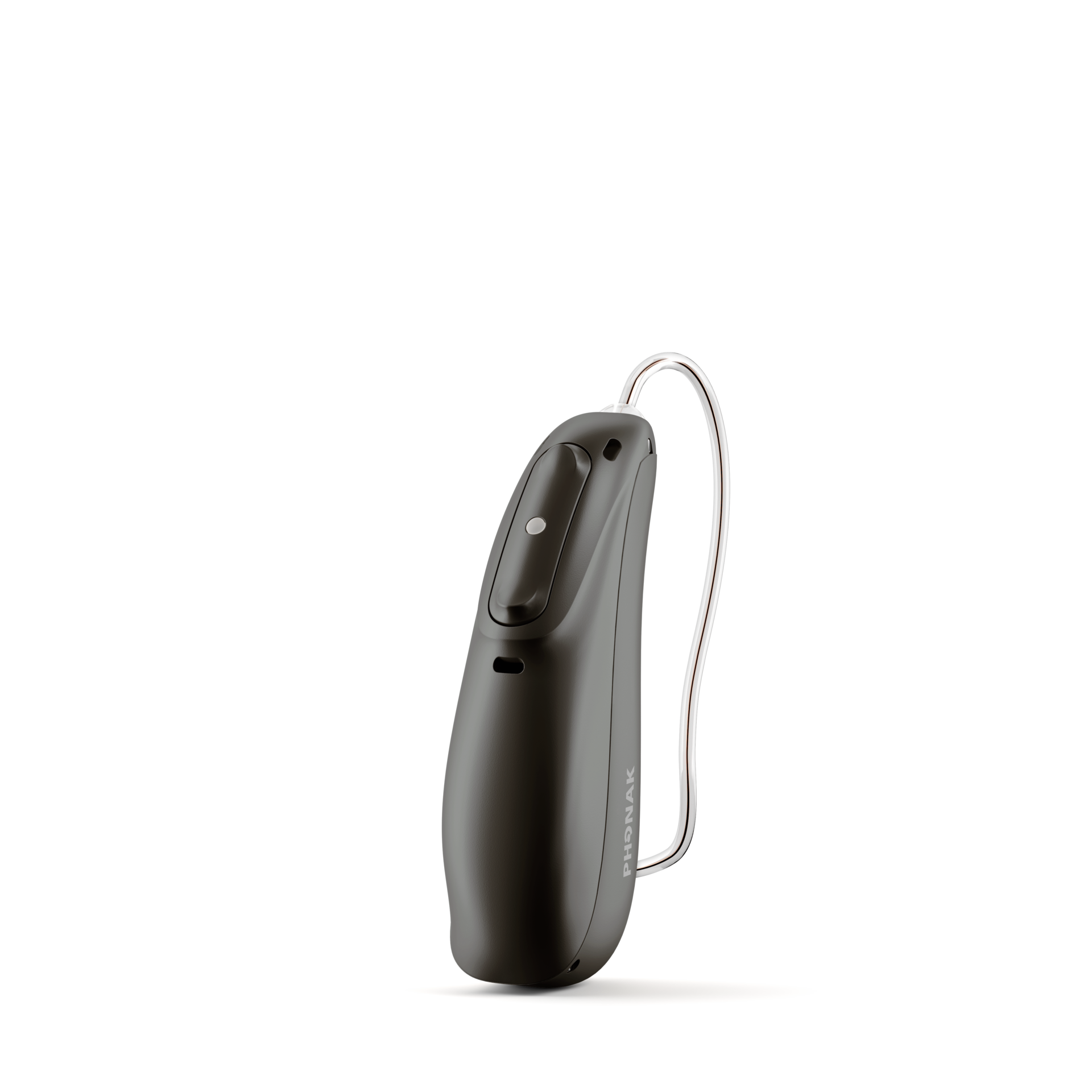A rechargeable hearing aid is easy to use and has no battery hassles. Plus, you have access to additional hearing performance features only available because of rechargeable technology.
Conversations shine with Lumity
Hearing can be challenging in different situations. With Phonak Lumity we provide you with improved speech understanding in noise¹, making it easier for you to concentrate on what you really want to hear³. Dive deep into conversations around you and enjoy effortless hearing, wherever you are.
An enlightening hearing experience
Because no matter who is speaking, Conversations shine with Lumity.

Made for easier hearing in challenging situations
Phonak Audéo™ Lumity
Audéo Lumity focuses on giving you improved speech understanding¹ with its unique Phonak SmartSpeech™ Technology so you can enjoy conversations in many challenging listening situations.
- Enjoy easier hearing in many situations³
- Enjoy universal connectivity with your personal devices
- Precise detection of speech from any direction Get more health insights and monitor your well-being with myPhonak app
- First fully rechargeable product range
Wearing hearing aids regularly and as recommended by the hearing care professional can improve your overall well-being.5


Addressing listening challenges with key solutions
Phonak Lumity, the first fully rechargeable Receiver-in-the-canal (RIC) portfolio, delivers unique products and features that help to fully immerse clients in conversations.

Benefits of rechargeable technology
Did you know that rechargeable technology is the preferred choice for hearing aid wearers and hearing care professionals? In fact, three out of four previous generation Phonak devices sold were rechargeable.
Better for you
Better for loved ones
Rechargeable hearing aids are safer to use. There are no batteries for small children or pets to accidentally get hold of.
Better for the environment
Your clients will save an average of 800 disposable batteries during the lifetime of a pair of hearing aids.**
Charger options

Phonak Charger Ease
In a new small and compact design, charging Audéo L-R and RT hearing aids in just three hours to offer a full day of hearing.***6
Resources and downloads
Need product support?
- Troubleshooting
- Maintenance
- Compatibility
Footnotes
* up to 50 cm
** Calculation of 800 batteries is based on an average of 5 days per battery, with life expectancy of hearing aid at 5-6year.
***16hrs of battery on a single charge, including 8hrs of everyday listening, 4hrs of Bluetooth streaming and 4 hours of TV streaming.
Battery life may be minimally reduced when using ActiveVent receiver.
1. Appleton, J. (2020) AutoSense OS 4.0- significantly less listening effort and preferred for speech intelligibility. Phonak Field Study News retrieved from www.phonak.com/evidence, accessed February, 2022.
Latzel, M. & Hobi, S. (2022) Receiver with mechanical vent provides benefit of open and closed acoustics for better speech understanding in noise and naturalness of own voice perception. Phonak Field Study News in preparation. Expected mid of 2022.
Thibodeau L. M. (2020) Benefits in Speech Recognition in Noise with Remote Wireless Microphones in Group Settings. Journal of the American Academy of Audiology, 31(6), 404–411.
2. Woodward,J and Latzel, M (2022) New implementation of directional beamforming configurations show improved speech understanding and reduced listening effort. Phonak Field Study News in preparation. Expected end of 2022.
3. Appleton, J. (2020) AutoSense OS 4.0- significantly less listening effort and preferred for speech intelligibility. Phonak Field Study News retrieved from www.phonak.com/evidence, accessed February 2022.
4. Hornsby, B.W.Y. (2013). The effects of hearing aid use on listening effort and mental
fatigue associated with sustained speech processing demands. Ear and Hearing, 34(5), 523–534. https://doi.org/10.1097/AUD.0b013e31828003d8
Picou, E.M., Ricketts, T.A., & Hornsby, B.W.Y. (2013). How hearing aids, background noise, and visual cues influence objective listening effort. Ear and Hearing, 34(5), e52–e64. https://doi.org/10.1097/AUD.0b013e31827f0431
Pichora-Fuller, M.K., & Singh, G. (2006). Effects of Age on Auditory and Cognitive Processing: Implications for Hearing Aid Fitting and Audiologic Rehabilitation. Trends in Amplification, 10(1), 29–59. https://doi.org/10.1177/108471380601000103.
5. Vercammen, C., Ferguson, M., Kramer, S.E., et al. (2020). Well-Hearing is Well-Being. Hearing Review, 27(3), 18-22. Retrieved from https://www.hearingreview.com/hearing-loss/patient-care/counseling-education/well-hearing-is-well-being on June 1st, 2020.
6. Nilsson, M. & Omisore, D., (2017). The Phonak rechargeable solution: Part 2. Phonak Field Study News, retrieved from www.phonak.com/evidence, accessed February 19th, 2018.












